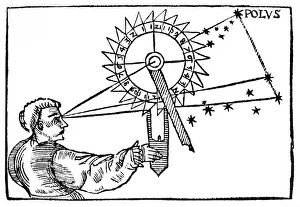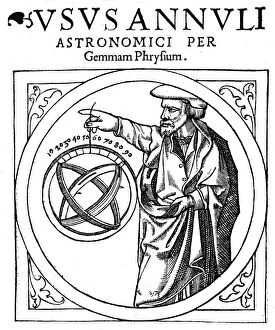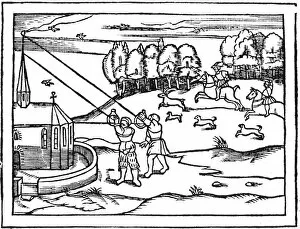Apianus Collection
"Exploring the Cosmos: The Legacy of Apianus" Step back in time to the 16th century and discover the remarkable contributions of Peter Apianus, a German geographer
All Professionally Made to Order for Quick Shipping
"Exploring the Cosmos: The Legacy of Apianus" Step back in time to the 16th century and discover the remarkable contributions of Peter Apianus, a German geographer, mathematician, and astronomer. Through his intricate diagrams and innovative instruments, Apianus revolutionized our understanding of the universe. In 1539, Apianus unveiled his groundbreaking diagram showcasing the Geocentric system of the universe. This masterpiece depicted Earth as the center with celestial bodies orbiting around it—an influential concept that shaped astronomical thought for centuries to come. Not stopping there, it also delved into practical applications of astronomy. His nocturnal invention allowed people to tell time at night by observing stars—a significant advancement in navigation and timekeeping during those times. Furthermore, he developed techniques for measuring celestial objects' altitude. In collaboration with Reiner Gemma Frisius, a Dutch astronomer and cartographer, they refined methods to determine precise measurements using astrolabes—a testament to their dedication towards accuracy in scientific pursuits. Apianus's passion extended beyond his own works; he was an avid publisher too. Titles like "Quadrans Apiani" (1532) and "Isagoge in Typum Cosmographicum seu Mappam Mundi" (1523) showcased his commitment to sharing knowledge with fellow scholars. Pieter Bennewitz or Bennewitz von Astrolabium—alternative names used by Peter Apian—are synonymous with excellence in astronomy. His expertise attracted attention from astronomers worldwide who sought guidance on utilizing astronomical sextants effectively—an instrument crucial for measuring solar altitudes accurately. Intriguingly captured by artists such as Petrus Apianus himself or Pieter Bennewitz is an image depicting astronomers engrossed in their work alongside their trusty instruments—a visual representation of their unwavering dedication towards unraveling celestial mysteries. Peter Apianus's legacy lives on, inspiring generations of astronomers to explore the cosmos.
















